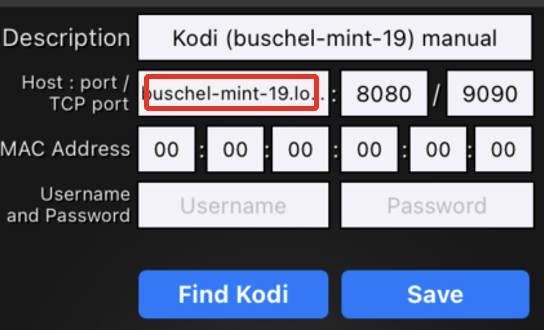2022-11-20, 03:18
I usually don't bother with writing feedback on forums or private bug trackers anymore because of the track record of it being a waste of the not insignificant time needed to sign up (this forum not excluded) and to describe the problem, but I was asked nicely on the AppStore to describe my setup and to suggest improvement, and was directed here, so I'll give it one shot:
App version: latest as of writing. If that's not good enough then you can easily solve the problem with design: expose the version number clearly in the app. I certainly couldn't spot it. After writing the above I took a wild stab at tapping the Kodi logo and there it was — apparently that's the universal gesture for "show app info". Version is 1.11. Seriously, just print the version number in one of the sidebars, and introduce a simple button "About the app" instead of this hide-and-seek. I suppose that's improvement #1.
And now to the actual problem:
A red bar on launch displaying infinite error messages that a "data connection isn't allowed right now" whenever cellular data is blocked for the app while LAN access is allowed.
First of all the error is nonsensical since "data connection" obviously implies it's trying to access cellular internet in this case...to connect to a .local mDNS address. And the errors continue forever until I disable cellular data system wide in control center, after which it happily connects to my local Kodi instance.
What I find weird about the above:
1. To quote Wikipedia: "The domain name .local is a special-use domain name reserved by the Internet Engineering Task Force (IETF) so that it may not be installed as a top-level domain in the Domain Name System (DNS) of the Internet." What's the point of insisting on an internet ("data") connection? There's almost zero chance it's going to work properly anyway.
2. LAN access is still allowed. Why isn't that enough? It's as if the app prefers cellular data even when it's been disallowed for the app.
3. The app gives the impression of inspecting the system state for cellular data, while at the same time ignoring that it might be individually disallowed from using it even when cellular data is enabled globally.
You might not think that this corresponds to your own experience of how the app works, and you would likely be right, so I'll add one final detail that should be enough to zero in on the problem:
This only happens when the current WiFi connection (I.e. the local network) has no configured default router. It doesn't matter if the default router actually properly routes to the internet or not; if you have a non-internet connected default router it will immediately cause the app to stop generating errors and start working (over the local network).
This is a big problem if your local network actually doesn't have an internet connection, since if you (incorrectly) add a default router anyway then all internet requests on iOS will fail when they get routed over WiFi instead of cellular. You're then left with a phone with no working apps, except Kodi remote.
App version: latest as of writing. If that's not good enough then you can easily solve the problem with design: expose the version number clearly in the app. I certainly couldn't spot it. After writing the above I took a wild stab at tapping the Kodi logo and there it was — apparently that's the universal gesture for "show app info". Version is 1.11. Seriously, just print the version number in one of the sidebars, and introduce a simple button "About the app" instead of this hide-and-seek. I suppose that's improvement #1.
And now to the actual problem:
A red bar on launch displaying infinite error messages that a "data connection isn't allowed right now" whenever cellular data is blocked for the app while LAN access is allowed.
First of all the error is nonsensical since "data connection" obviously implies it's trying to access cellular internet in this case...to connect to a .local mDNS address. And the errors continue forever until I disable cellular data system wide in control center, after which it happily connects to my local Kodi instance.
What I find weird about the above:
1. To quote Wikipedia: "The domain name .local is a special-use domain name reserved by the Internet Engineering Task Force (IETF) so that it may not be installed as a top-level domain in the Domain Name System (DNS) of the Internet." What's the point of insisting on an internet ("data") connection? There's almost zero chance it's going to work properly anyway.
2. LAN access is still allowed. Why isn't that enough? It's as if the app prefers cellular data even when it's been disallowed for the app.
3. The app gives the impression of inspecting the system state for cellular data, while at the same time ignoring that it might be individually disallowed from using it even when cellular data is enabled globally.
You might not think that this corresponds to your own experience of how the app works, and you would likely be right, so I'll add one final detail that should be enough to zero in on the problem:
This only happens when the current WiFi connection (I.e. the local network) has no configured default router. It doesn't matter if the default router actually properly routes to the internet or not; if you have a non-internet connected default router it will immediately cause the app to stop generating errors and start working (over the local network).
This is a big problem if your local network actually doesn't have an internet connection, since if you (incorrectly) add a default router anyway then all internet requests on iOS will fail when they get routed over WiFi instead of cellular. You're then left with a phone with no working apps, except Kodi remote.

